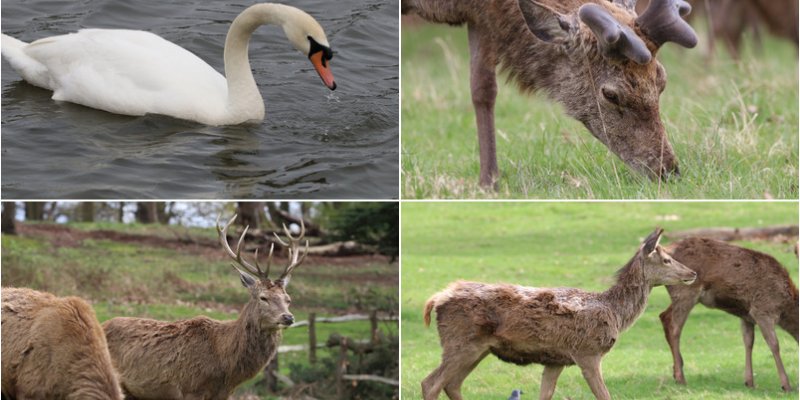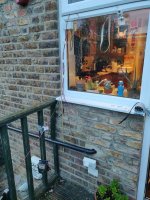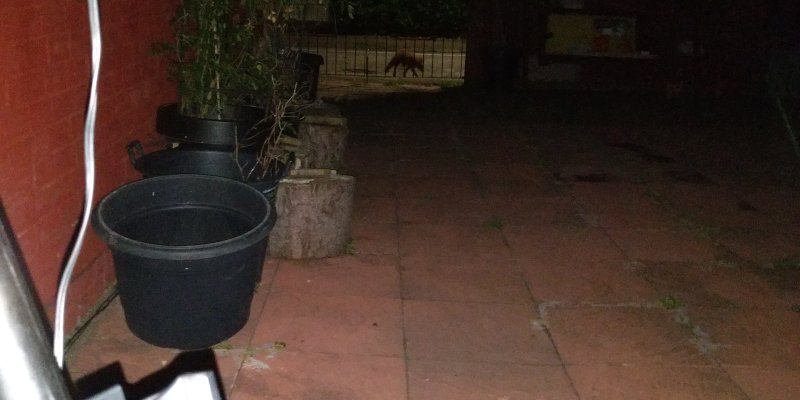As spring seems to have fully arrived in London, our garden looks quite full of life.
I spent some time this afternoon taking snaps and a few videos of the local parrots. In the morning they come in flocks of 10 or 20, while in late afternoon there's usually 2 or 3 at time.

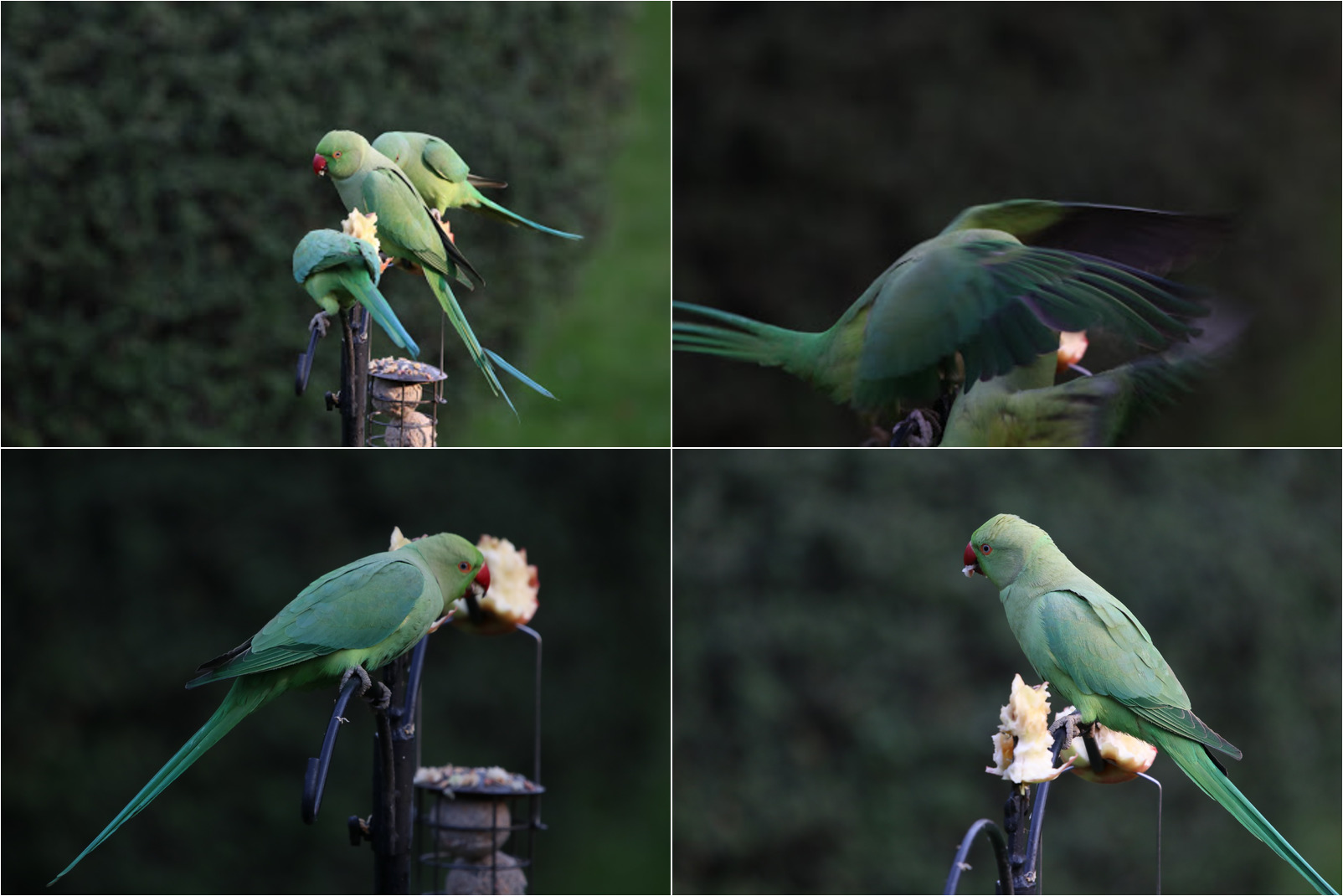
During the evening, our usual male and female foxes came visiting, quite unusually at the same time, so I took the chance to make a few pictures of them together

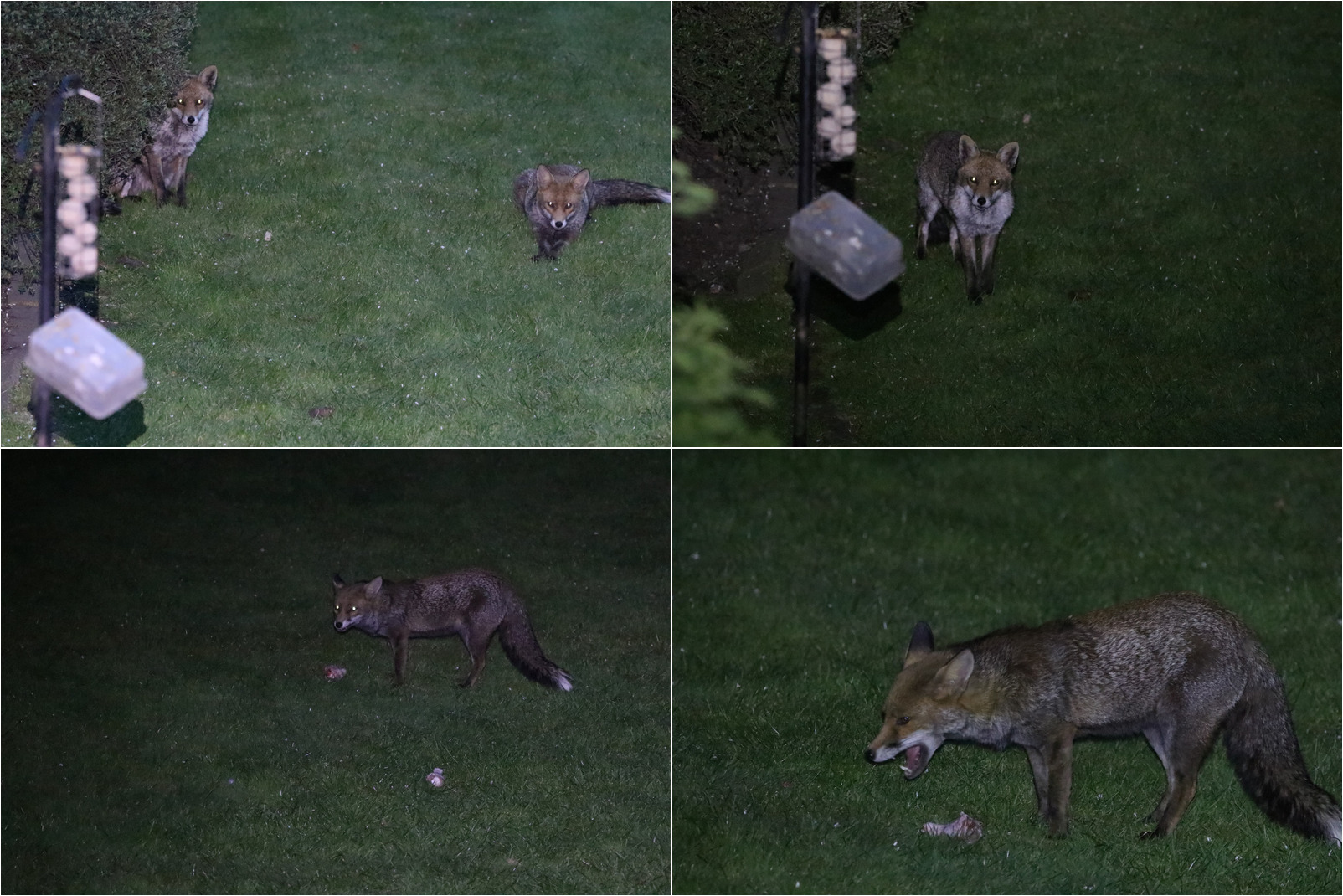
"Hunting" for deers pictures, but with a few extras, on a cloudy day in Richmond Park. Also proved as a good test for my new camera, a Canon EOS 80D,


Since I've never blogged about this project, there's quite a lot to catch up, so I'm gonna make a first summary with all (or a good part of) the content I've captured so far.
Let's start by videos: here's a youtube playlist with all the videos captured so far
Open in Youtube
The playlist is ordered starting from the most recent going backwards in time, so the first videos are actually the last.
In addition to the equipment described in the previous post I occasionally am also able to take zoomed pictures with my DSLR cameras, a Canon EOS 700D at first, an EOS 80D more recently, and a Sigma 150-600 zoom lens.
These are the best albums so far
First encounter
A few pictures taken before I started feeding them (back in January 2018), with an old telelens. The quality is pretty bad, actually, but I put it here anyway, as it's a nice memory.

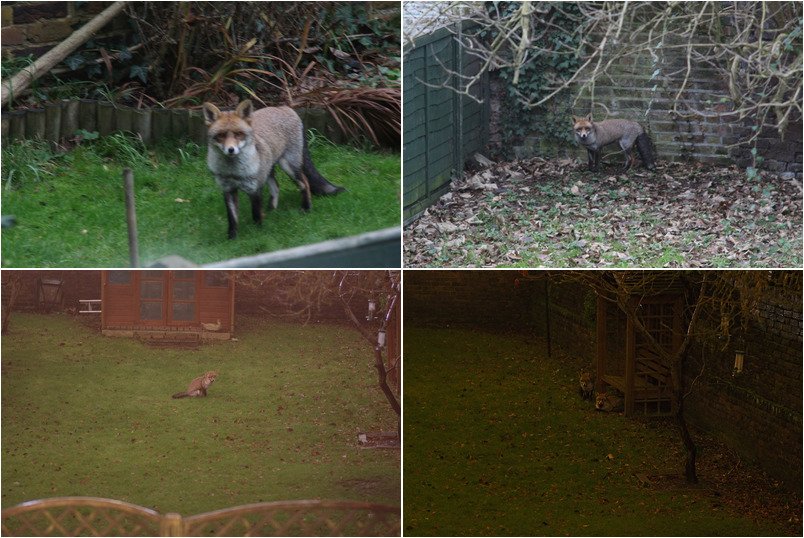
Roughly more than a year ago I started this little project: feeding local foxes, that were already visiting very often our garden, mainly to try and get as many pics as possible.
When I started I just took occasional pics with a DSLR and telephoto lens, I then installed a first Raspberry Pi with an Infrared sensible camera and a single IR light to monitor the garden during the night, studying their habits and how to best interact with them. IR lights are essential to get a light source without disturbing the foxes (and the environment) with too much visible light.
As I started getting results, I started improving my setup times and times. Firstly I added more IR lights This is my current setup as it stands.
There are two raspberry pi cameras: one inside a waterproof box, getting closeups, the other indoors, with just the camera and its cable getting out of the window. There's a set of three infrared floodlights: the smallest two are visible in the picture, and they illuminate t...
This august I was able to go with our astronomical group to our usual appointment at Colle dell'Agnello in Italy, very close to France border.
The place is very dark, but the weather can often be a problem. Sometimes too windy, clouds covering the sky pretty quickly, sometimes even surrounding us (massive humidity, lens and mirrors getting wet).
During one of these nights I tried to get NGC7000, only to get inside a cloud right 5 minutes after finishing setting up everything and starting exposures.
It lasted a while, and I didn't have much time left, so I decided to get a quick shot at an old classic, M31.
Here's the result:
M31 from Colle dell'Agnello
A classic astrophotography subject, startrails can show how much the celestial sphere rotates in just a few hours (in this case, 4).
This one in particular also highlights how many airplanes wander above our heads, you can see lots of them quite clearly, straight intermittent lines striking the perfect circles drawn by the stars.
City star trails
Lots of planes passing by, as it's very clear by the trails they left.
A timelapse generated from the same set of images can be found here: [url=https://vimeo.com/270318537]https://vimeo.com/270318537[/url]
This simple yet effective tecnique also has the side effect of allowing to build a timelapse using the very same set of images.
Technical data: Canon EOS 700d,...
I recently needed a cheap 2 in 1 laptop, both for having a smaller lightweight astrophotography laptop, and for general usage. I chose the iOTA 360, currently on Amazon for less than 200£.
It was a bet, since looking around I couldn't find anyone claiming a successful GNU/Linux installation on it, but with some work I managed to get pretty much everything working.
The following guide should help you installing any recent version of Ubuntu on the iOTA 360.
A lot of these instructions/tools (including EFI 32bit bootloader, and Screen Rotator) can apply to other 2in1 laptops as well
This is the first of a series of articles. As I'm always experimenting and tuning my setup, I'm not sure how many more articles I'll be writing.
A few years ago I began to introduce myself to astrophotography. I had some fairly nice equipment back then: a SkyWatcher HEQ5 mount, a Meade ACF 8", guide scope and camera, a borrowed reflex, laptop, 12v car battery.
Although this is pretty much entry level equipment, barely sufficient to getting started, it had been already quite expensive (almost 2000€ just for scope and mount, even though the scope was second hand), bulky and heavy. I ended up barely using it, both because of a relatively steep learning curve and because I honestly was getting tired of carrying around 20/30KG of equipment with barely any tangible result.
Then a few things happened: the mount was stolen, I sold the optical tube, and ended up moving to London, where I embraced a new "astronomical philosophy": the lighter, the better.
Last saturday, after lots of garden testing and software checks, I've finally been able to drive to a dark place for a few deep sky shots.
The driving part itself was the most "scary", as I'm still new to driving in the "wrong side" of the road... Getting the hang of it, though..
I chose to go observing with the HantsAstro stargazing group.. they met in a quite dark site (at least for being not too far from London), and their website and facebook pages really did inspire me. I'm really glad I joined them, as it was a really pleasant evening, with lots of nice people.
My target for the evening was the center of the Cygnus constellation, between Deneb and Sadr. It's an area full of nebulae, perfect for a wide field lens. Technical data, together with stars and object names, can be found in the astrobin technical page.
Cygnus' heart
As I wrote on my previous post, an exceptionally good weather kept me outside pretty much every night just when Jupiter was at its best.
On April the 7th, during its opposition, I was able to capture a sequence of 4 sets of video captures, each one in RGB. I tried to optimize as much as possible my timings, in order to keep rotational differences between frames under control. This will probably be even easier on a future Planetary Imager release, when I'll implement a scripting interface.
The results are even better than the previous evening.
I was able to take 4 images, and create an animation displaying Jupiter's rotation and its satellites.
Jupiter mini animation, 07/04/2017
Still frames:
[u...

